Historical Places of Iran
Iran’s Historical Sites in the UNESCO List
There are a lot of Iranian historic sites registered in UNESCO’s list of World Heritage. Here you get familiar with those which have been registered in the UNESCO so far. Of course, Iran is an ancient country that can potentially offer plenty of more historic sites and tourist attractions to its visitors.
Persepolis
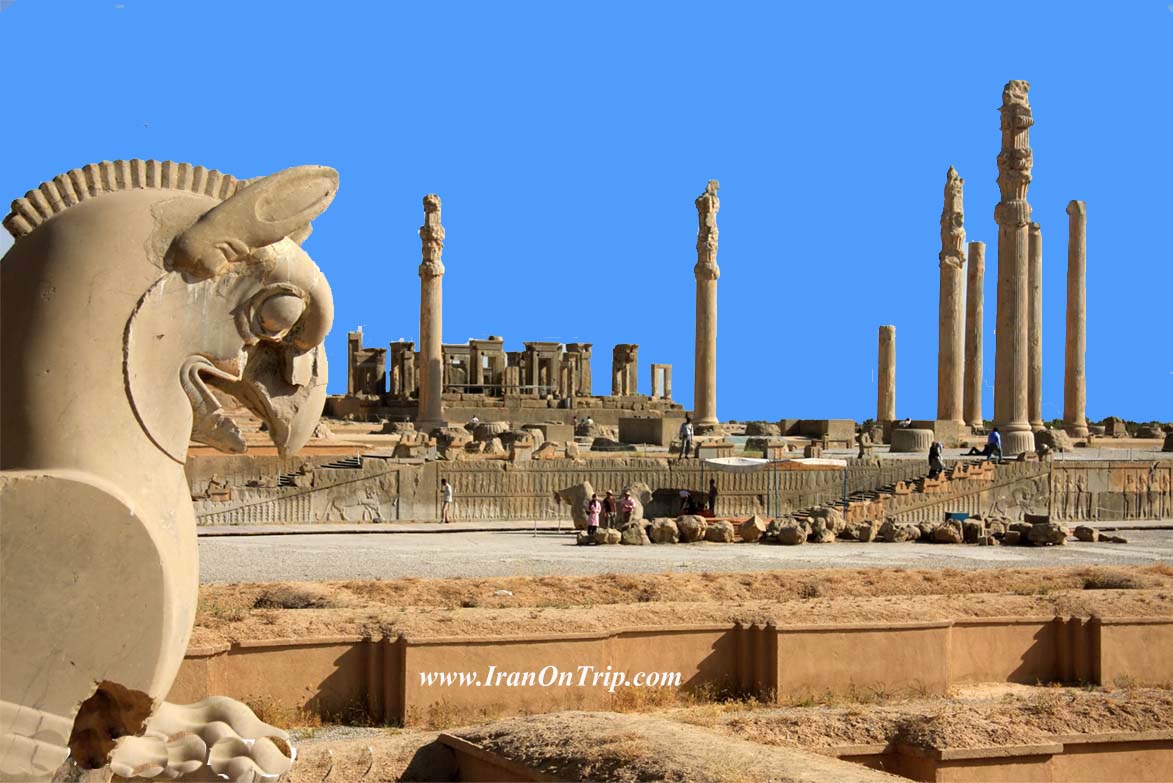
Persepolis: Unesco Historic Site: Persepolis This historic site is a ceremonial palace compound and the most famous and popular site in Iran. It is the palace complex built under Darius the Great in 518 B.C. There used to be 29 nations sending delegation there to the Persian emperors paying respect and meeting on certain occasions A series of ancient palaces Founded by Darius I in 518 B.C., Persepolis was the capital of the Achaemenid Empire. It was built on an immense half-artificial, half-natural terrace, where the king of kings created an impressive palace complex inspired by Mesopotamian models. The importance and quality of the monumental ruins make it a unique archaeological site.
Meidan Emam, Esfahan (Naghshe-Jahan SQ)
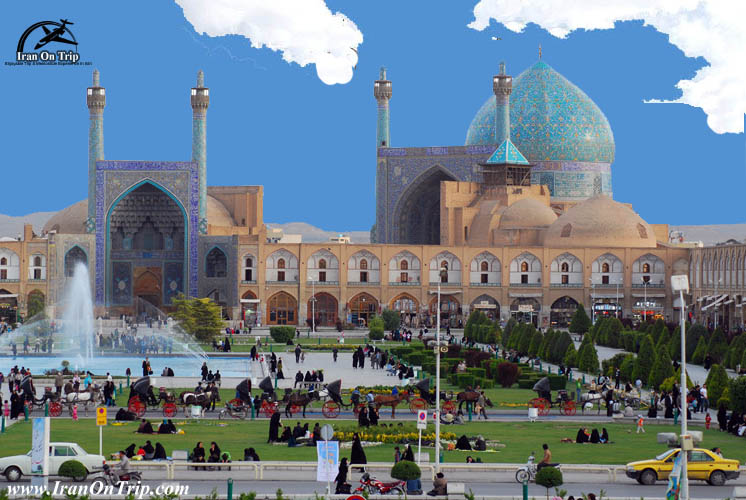 Meidan-e-Emam Khomeini : UNESCO Historical Site: Meidan-e-Emam This tourist attraction and historic site is a huge square with monuments on all its four sides along the two-storeyed arcades in Esfehan. What makes this site a top tourist attraction is the ultimately grand examples of Iranian architecture. Two mosques, a palace and a bazaar are making a breath-taking
Meidan-e-Emam Khomeini : UNESCO Historical Site: Meidan-e-Emam This tourist attraction and historic site is a huge square with monuments on all its four sides along the two-storeyed arcades in Esfehan. What makes this site a top tourist attraction is the ultimately grand examples of Iranian architecture. Two mosques, a palace and a bazaar are making a breath-taking
Meidan Emam, Esfahan
Built by Shah Abbas I the Great at the beginning of the 17th century, and bordered on all sides by monumental buildings linked by a series of two-storeyed arcades, the site is known for the Royal Mosque, the Mosque of Sheykh Lotfollah, the magnificent Portico of Qaysariyyeh and the 15th-century Timurid palace. They are an impressive testimony to the level of social and cultural life in Persia during the Safavid era.
The Royal Square of Esfahan is a monument of Persian socio-cultural life during the Safawid period (until 1722). It is an urban phenomenon which is an exception in Iran where the cities are ordinarily tightly parcelled without spatial fluidity, the exception being the interior courts of the caravanserais. It is an example of the form of naturally vulnerable urban architecture.
Bam
 Bam: UNESCO Historical Site: Bam This is an ancient walled city originally built under Achaemenians and has been a tourist attraction and historic site despite all the natural devastation cases, earthquakes. Kariz underground water supplement system made life possible in this oasis. Life was going on here more than 2000
Bam: UNESCO Historical Site: Bam This is an ancient walled city originally built under Achaemenians and has been a tourist attraction and historic site despite all the natural devastation cases, earthquakes. Kariz underground water supplement system made life possible in this oasis. Life was going on here more than 2000
Bam is situated in a desert environment on the southern edge of the Iranian high plateau. The origins of Bam can be traced back to the Achaemenid period (6th to 4th centuries BC). Its heyday was from the 7th to 11th centuries, being at the crossroads of important trade routes and known for the production of silk and cotton garments. The existence of life in the oasis was based on the underground irrigation canals, the qanāts, of which Bam has preserved some of the earliest evidence in Iran. Arg-e Bam is the most representative example of a fortified medieval town built in vernacular technique using mud layers (Chineh ).
Pasargadae
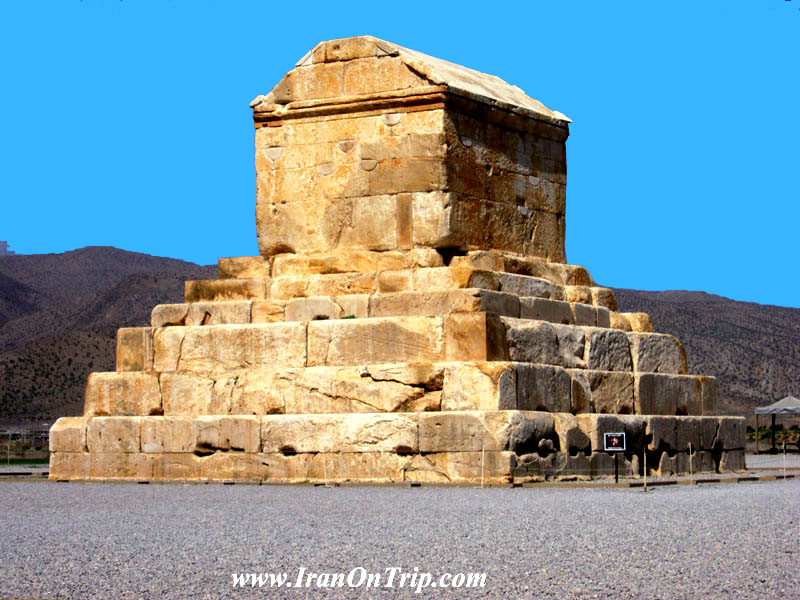 Pasargadae: UNESCO Historical Site: Pasargadae This is the capital city of the first dynastic Persian Empire, Achaemenians in ancient Iran. Pasargadae is also the first example of Achaemenians’ palace compounds and the first examples of Persian garden planning in Iranian history. The tomb of Cyrus the great is here …
Pasargadae: UNESCO Historical Site: Pasargadae This is the capital city of the first dynastic Persian Empire, Achaemenians in ancient Iran. Pasargadae is also the first example of Achaemenians’ palace compounds and the first examples of Persian garden planning in Iranian history. The tomb of Cyrus the great is here …
Pasargadae was the first dynastic capital of the Achaemenid Empire, founded by Cyrus II the Great, in Pars, homeland of the Persians, in the 6th century BC. Its palaces, gardens and the mausoleum of Cyrus are outstanding examples of the first phase of royal Achaemenid art and architecture and exceptional testimonies of Persian civilization. Particularly noteworthy vestiges in the 160-ha site include: the Mausoleum of Cyrus II; Tall-e Takht, a fortified terrace; and a royal ensemble of gatehouse, audience hall, residential palace and gardens. Pasargadae was the capital of the first great multicultural empire in Western Asia. Spanning the Eastern Mediterranean and Egypt to the Hindus River, it is considered to be the first empire that respected the cultural diversity of its different peoples. This was reflected in Achaemenid architecture, a synthetic representation of different cultures.
Bisotun
 Bisotun: UNESCO Historical Site: Bisotun This is the largest inscription of the world consisting of 1119 lines of cuneiform in three languages and situated in a very well-known spot. The rock relieves depict Darius the Great after an initial endeavor to arrest the rebels who had introduced themselves falsely as sons of Cyrus the Great. This huge inscription is in Cuneiform
Bisotun: UNESCO Historical Site: Bisotun This is the largest inscription of the world consisting of 1119 lines of cuneiform in three languages and situated in a very well-known spot. The rock relieves depict Darius the Great after an initial endeavor to arrest the rebels who had introduced themselves falsely as sons of Cyrus the Great. This huge inscription is in Cuneiform
Tchogha Zanbil
 This list gets updated as UNESCO approves the documentations offered by the Iranian delegation to the UN. Here’s the list of UNESCO’s World Heritage Sites in Iran up to this date: Tchogha Zabnil: UNESCO Historical Site: Tchogha Zanbil Temple, Iran This Elamite temple is a ziggurat-shaped structure built under the kingdom of Elam, c. 1250 B.C. It is surrounded by three huge walls and can be seen from a long distance. Millions of bricks have been used in the construction of this temple. Some of them are engraved in cuneiform writing. The ruins of the holy city of the Kingdom of Elam, surrounded by three huge concentric walls, are found at Tchogha Zanbil. Founded c. 1250 B.C., the city remained unfinished after it was invaded by Ashurbanipal, as shown by the thousands of unused bricks left at the site.
This list gets updated as UNESCO approves the documentations offered by the Iranian delegation to the UN. Here’s the list of UNESCO’s World Heritage Sites in Iran up to this date: Tchogha Zabnil: UNESCO Historical Site: Tchogha Zanbil Temple, Iran This Elamite temple is a ziggurat-shaped structure built under the kingdom of Elam, c. 1250 B.C. It is surrounded by three huge walls and can be seen from a long distance. Millions of bricks have been used in the construction of this temple. Some of them are engraved in cuneiform writing. The ruins of the holy city of the Kingdom of Elam, surrounded by three huge concentric walls, are found at Tchogha Zanbil. Founded c. 1250 B.C., the city remained unfinished after it was invaded by Ashurbanipal, as shown by the thousands of unused bricks left at the site.
Soltaniyeh
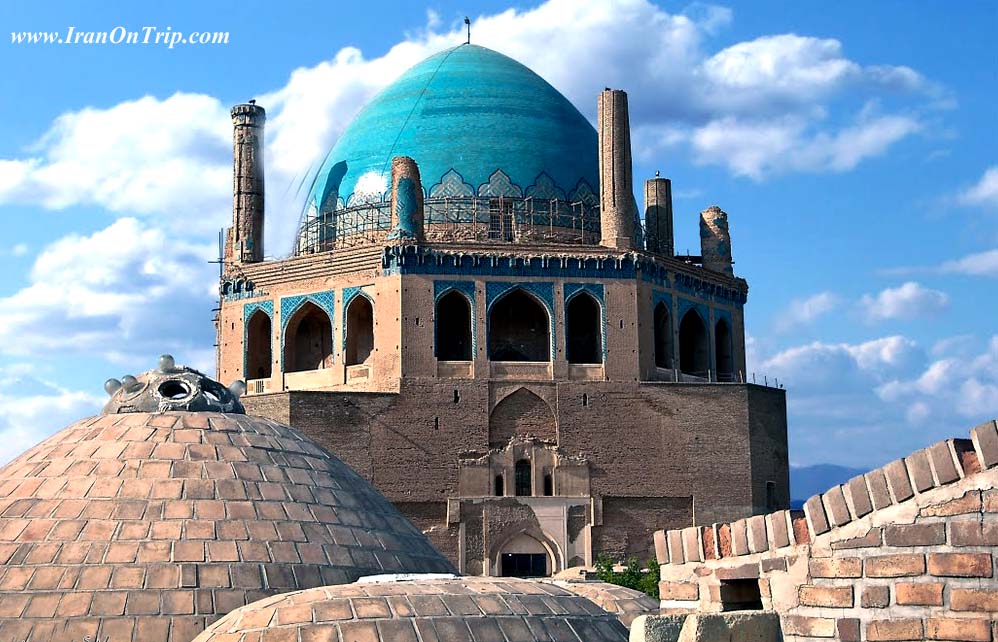 Soltaniyeh: UNESCO Historical Site: Soltaniyeh This tourist attraction and historic site is the capital of the Ilkhanid dynasty where the mausoleum of Oljaytu is located. This masterpiece of architecture is a unique example of Iranians’ precision in mathematics and calculation in engineering. It is also a perfect example of Ilkhanid structure embellishment and calligraphy.The mausoleum of Oljaytu was constructed in 1302–12 in the city of Soltaniyeh, the capital of the Ilkhanid dynasty, which was founded by the Mongols. Situated in the province of Zanjan, Soltaniyeh is one of the outstanding examples of the achievements of Persian architecture and a key monument in the development of its Islamic architecture. The octagonal building is crowned with a 50 m tall dome covered in turquoise-blue faience and surrounded by eight slender minarets. It is the earliest existing example of the double-shelled dome in Iran. The mausoleum’s interior decoration is also outstanding and scholars such as A.U. Pope have described the building as ‘anticipating the Taj Mahal’.
Soltaniyeh: UNESCO Historical Site: Soltaniyeh This tourist attraction and historic site is the capital of the Ilkhanid dynasty where the mausoleum of Oljaytu is located. This masterpiece of architecture is a unique example of Iranians’ precision in mathematics and calculation in engineering. It is also a perfect example of Ilkhanid structure embellishment and calligraphy.The mausoleum of Oljaytu was constructed in 1302–12 in the city of Soltaniyeh, the capital of the Ilkhanid dynasty, which was founded by the Mongols. Situated in the province of Zanjan, Soltaniyeh is one of the outstanding examples of the achievements of Persian architecture and a key monument in the development of its Islamic architecture. The octagonal building is crowned with a 50 m tall dome covered in turquoise-blue faience and surrounded by eight slender minarets. It is the earliest existing example of the double-shelled dome in Iran. The mausoleum’s interior decoration is also outstanding and scholars such as A.U. Pope have described the building as ‘anticipating the Taj Mahal’.
Takht-e-Soleyman
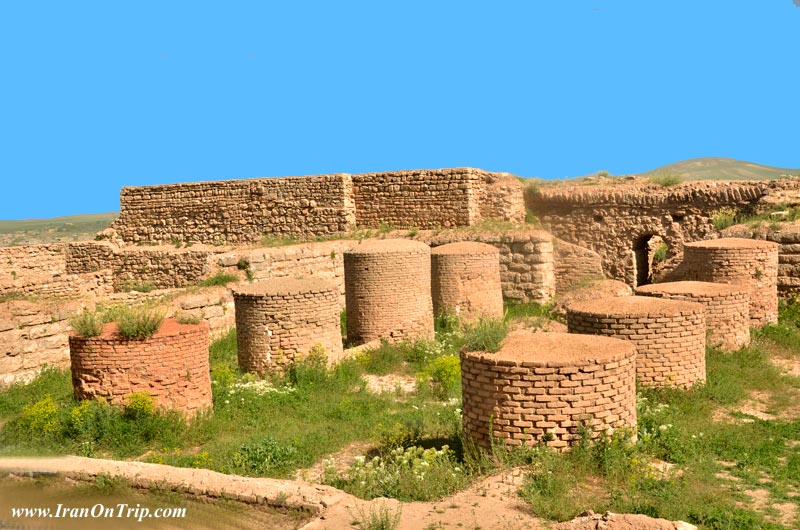 Takht-e-Soleyman: UNESCO Historical Site: Takht-e-Soleyman This exclusive historic site is an archaeological site in the mountains that has witnessed life in a large span of time. You can find various structures from pre-Islam to post-Islam eras here like fire temple, Anahita temple, and many more. This is a unique compound …
Takht-e-Soleyman: UNESCO Historical Site: Takht-e-Soleyman This exclusive historic site is an archaeological site in the mountains that has witnessed life in a large span of time. You can find various structures from pre-Islam to post-Islam eras here like fire temple, Anahita temple, and many more. This is a unique compound …
The archaeological site of Takht-e Soleyman, in north-western Iran, is situated in a valley set in a volcanic mountain region. The site includes the principal Zoroastrian sanctuary partly rebuilt in the Ilkhanid (Mongol) period (13th century) as well as a temple of the Sasanian period (6th and 7th centuries) dedicated to Anahita. The site has important symbolic significance. The designs of the fire temple, the palace and the general layout have strongly influenced the development of Islamic architecture.
Shushtar Waterfalls
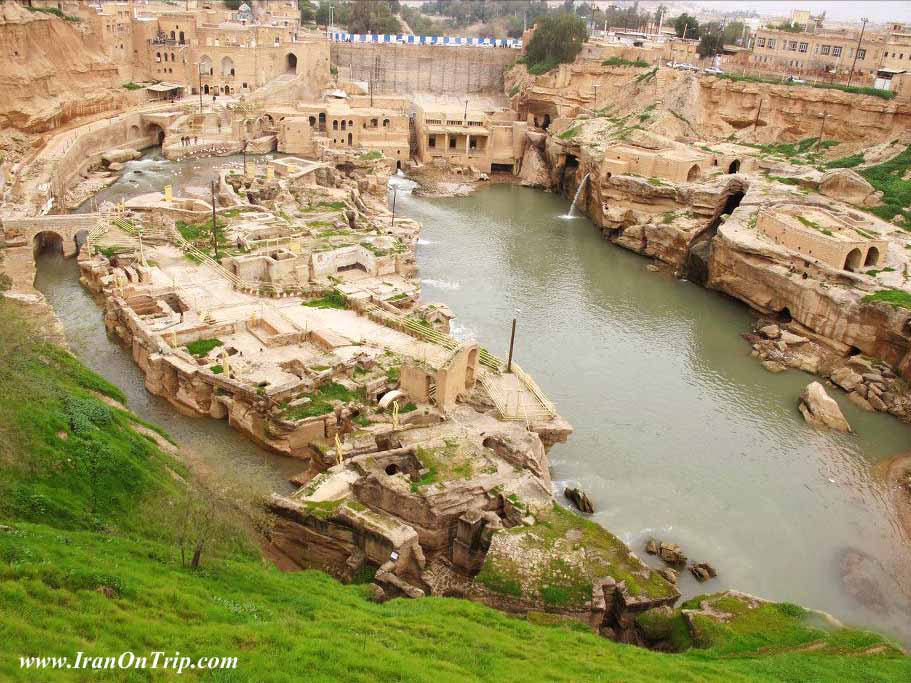 Shushtar Waterfalls: UNESCO Historical Site: Shushtar Waterfalls These waterfalls are the masterpieces of engineering at the time of ancient Iranians. The entire collection includes waterfalls, dams, bridges, basins, mills, etc. The waterfalls are planned and dug into the rocks on the new course of water chosen by the ancient engineers. For more than 1600 years, these mills
Shushtar Waterfalls: UNESCO Historical Site: Shushtar Waterfalls These waterfalls are the masterpieces of engineering at the time of ancient Iranians. The entire collection includes waterfalls, dams, bridges, basins, mills, etc. The waterfalls are planned and dug into the rocks on the new course of water chosen by the ancient engineers. For more than 1600 years, these mills
Shushtar Historical Hydraulic System
Shushtar, Historical Hydraulic System, inscribed as a masterpiece of creative genius, can be traced back to Darius the Great in the 5th century B.C. It involved the creation of two main diversion canals on the river Kârun one of which, Gargar canal, is still in use providing water to the city of Shushtar via a series of tunnels that supply water to mills. It forms a spectacular cliff from which water cascades into a downstream basin. It then enters the plain situated south of the city where it has enabled the planting of orchards and farming over an area of 40,000 ha. known as Mianâb (Paradise). The property has an ensemble of remarkable sites including the Salâsel Castel, the operation centre of the entire hydraulic system, the tower where the water level is measured, damns, bridges, basins and mills. It bears witness to the know-how of the Elamites and Mesopotamians as well as more recent Nabatean expertise and Roman building influence.
Golestan Palace
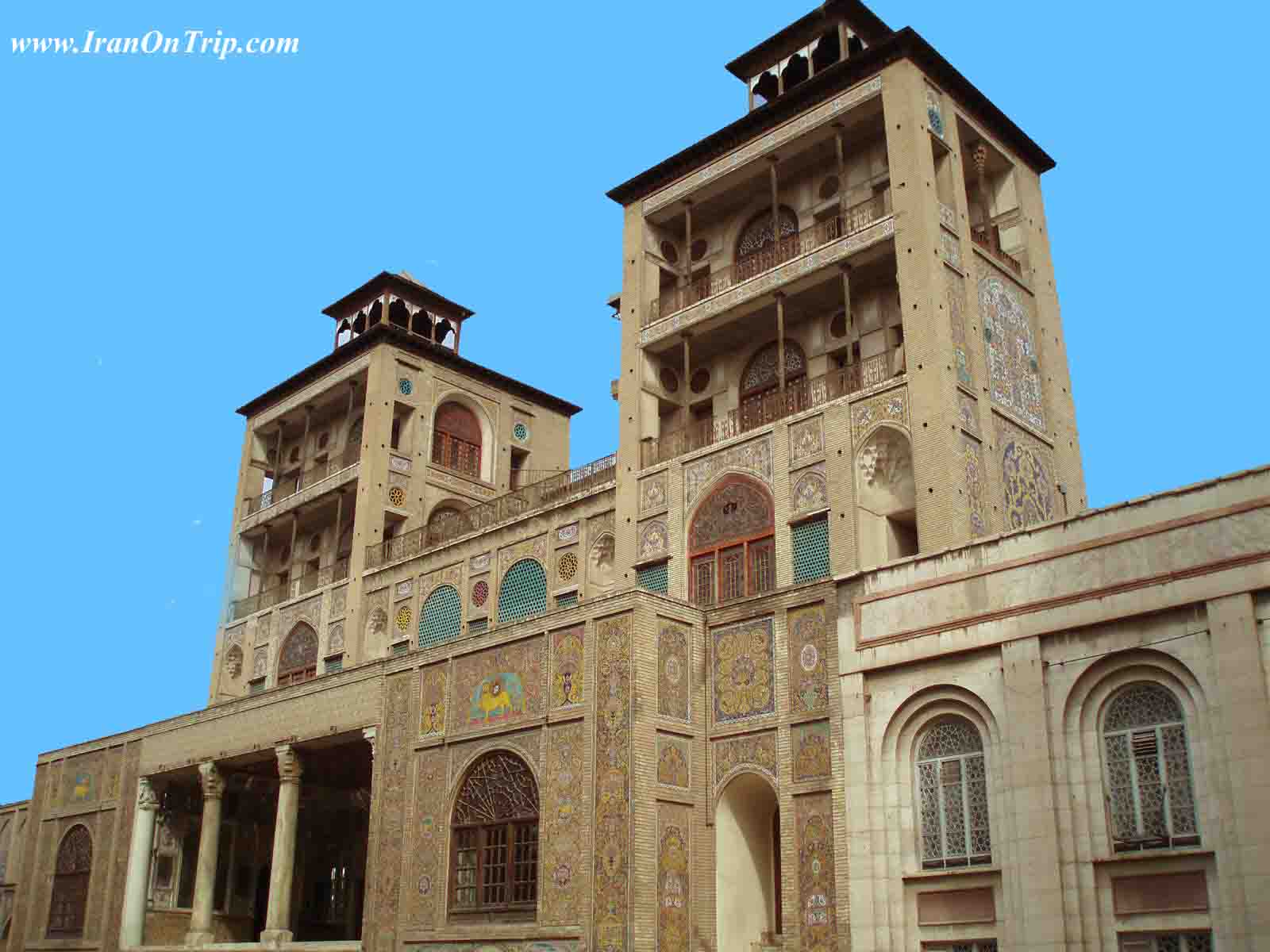
Golestan Palace: Golestan palace compound is a fantastic palace compound remaining from Qajar era, late 18th century, when they declared Tehran as capital. A series of palaces were built under Qajars here, which were also later used by Pahlavi dynasty. Golestan Palaces are in central Tehran and present
The lavish Golestan Palace is a masterpiece of the Qajar era, embodying the successful integration of earlier Persian crafts and architecture with Western influences. The walled Palace, one of the oldest groups of buildings in Teheran, became the seat of government of the Qajar family, which came into power in 1779 and made Teheran the capital of the country. Built around a garden featuring pools as well as planted areas, the Palace’s most characteristic features and rich ornaments date from the 19th century. It became a centre of Qajari arts and architecture of which it is an outstanding example and has remained a source of inspiration for Iranian artists and architects to this day. It represents a new style incorporating traditional Persian arts and crafts and elements of 18th century architecture and technology.
Masjed-e Jame of Isfahan
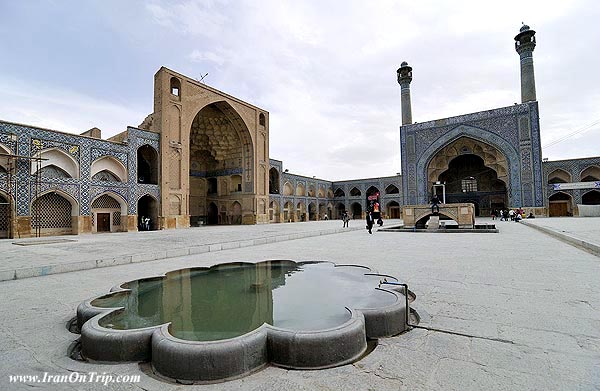 Masjed-e Jame of Isfahan: This Friday mosque represents the evolution of mosque building since early post-Islam era in Iran beginning in 9th century. Over time, different corners of the mosque have been constructed in different styles of their own times. This is the first Islamic building that has inherited Sasanian
Masjed-e Jame of Isfahan: This Friday mosque represents the evolution of mosque building since early post-Islam era in Iran beginning in 9th century. Over time, different corners of the mosque have been constructed in different styles of their own times. This is the first Islamic building that has inherited Sasanian
Masjed-e Jāmé of Isfahan
Located in the historic centre of Isfahan, the Masjed-e Jāmé (‘Friday mosque’) can be seen as a stunning illustration of the evolution of mosque architecture over twelve centuries, starting in ad 841. It is the oldest preserved edifice of its type in Iran and a prototype for later mosque designs throughout Central Asia. The complex, covering more than 20,000 m2, is also the first Islamic building that adapted the four-courtyard layout of Sassanid palaces to Islamic religious architecture. Its double-shelled ribbed domes represent an architectural innovation that inspired builders throughout the region. The site also features remarkable decorative details representative of stylistic developments over more than a thousand years of Islamic art.
Shahr-e-Sokhteh (Burnt City)
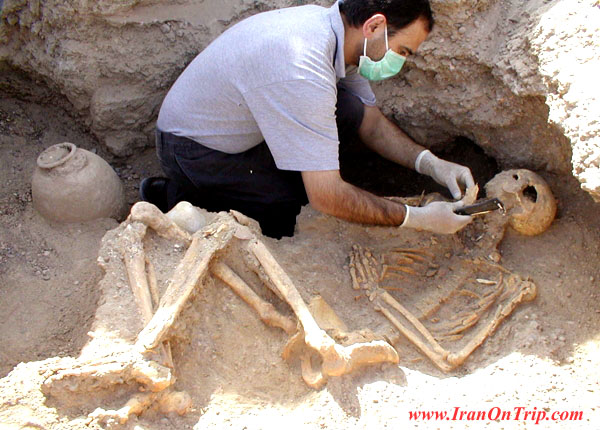
Shahr-I Sokhta: The remains of this mud brick city called hahr-e-Sukhteh (Burned City) is the first example of a series of complex societies in eastern Iran. It is a sizable archaeological site of the Bronze Age urban settlement, which is clearly associated with the Jiroft culture
Shahr-I Sokhta (Burnt City)
Shahr-i Sokhta, meaning ‘Burnt City’ is located at the junction of Bronze Age trade routes crossing the Iranian plateau. The remains of the mud brick city represent the emergence of the first complex societies in eastern Iran. Founded around 3200 BC, it was populated during four main periods up to 1800 BC, during which time there developed several distinct areas within the city. These include a monumental area, residential areas, industrial zones and a graveyard. Changes in water courses and climate change led to the eventual abandonment of the city in the early second millennium. The structures, burial grounds and large number of significant artefacts unearthed there, and their well-preserved state due to the dry desert climate, make this site a rich source of information regarding the emergence of complex societies and contacts between them in the third millennium BC.
Gonbad-e Qabus
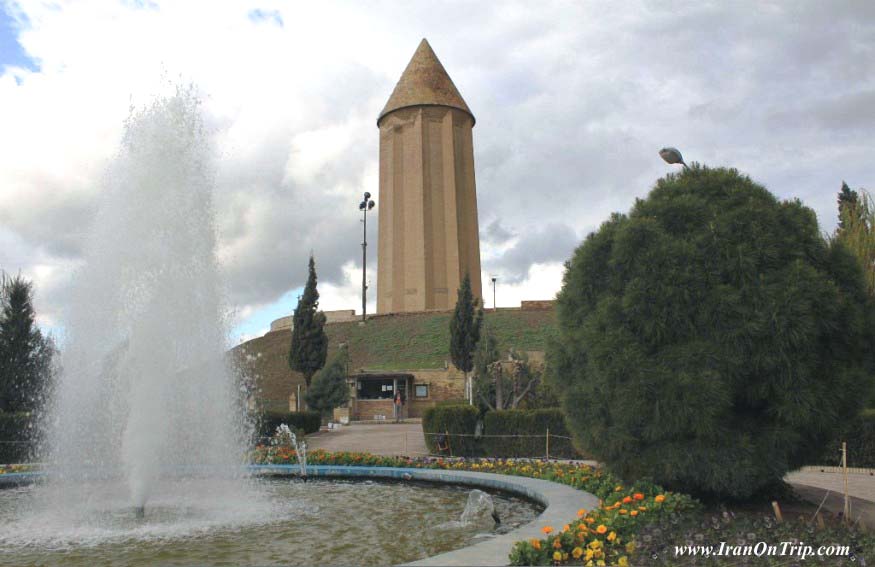 Gonbad-e Qabus: This fantastic example of tomb tower building in Iran date back to 1006, when Ziyarid were ruling in Iran. It was built out of unglazed fired bricks at a corner of the ancient city of Jorjan nothing of which has remained except for this structure. The 53-meter high sacral tower has escaped Mongols’
Gonbad-e Qabus: This fantastic example of tomb tower building in Iran date back to 1006, when Ziyarid were ruling in Iran. It was built out of unglazed fired bricks at a corner of the ancient city of Jorjan nothing of which has remained except for this structure. The 53-meter high sacral tower has escaped Mongols’
Gonbad-e Qabus
The 53 m high tomb built in ad 1006 for Qābus Ibn Voshmgir, Ziyarid ruler and literati, near the ruins of the ancient city of Jorjan in north-east Iran, bears testimony to the cultural exchange between Central Asian nomads and the ancient civilization of Iran. The tower is the only remaining evidence of Jorjan, a former centre of arts and science that was destroyed during the Mongols’ invasion in the 14th and 15th centuries. It is an outstanding and technologically innovative example of Islamic architecture that influenced sacral building in Iran, Anatolia and Central Asia. Built of unglazed fired bricks, the monument’s intricate geometric forms constitute a tapering cylinder with a diameter of 17–15.5 m, topped by a conical brick roof. It illustrates the development of mathematics and science in the Muslim world at the turn of the first millennium AD.
Armenian Monastic Ensembles
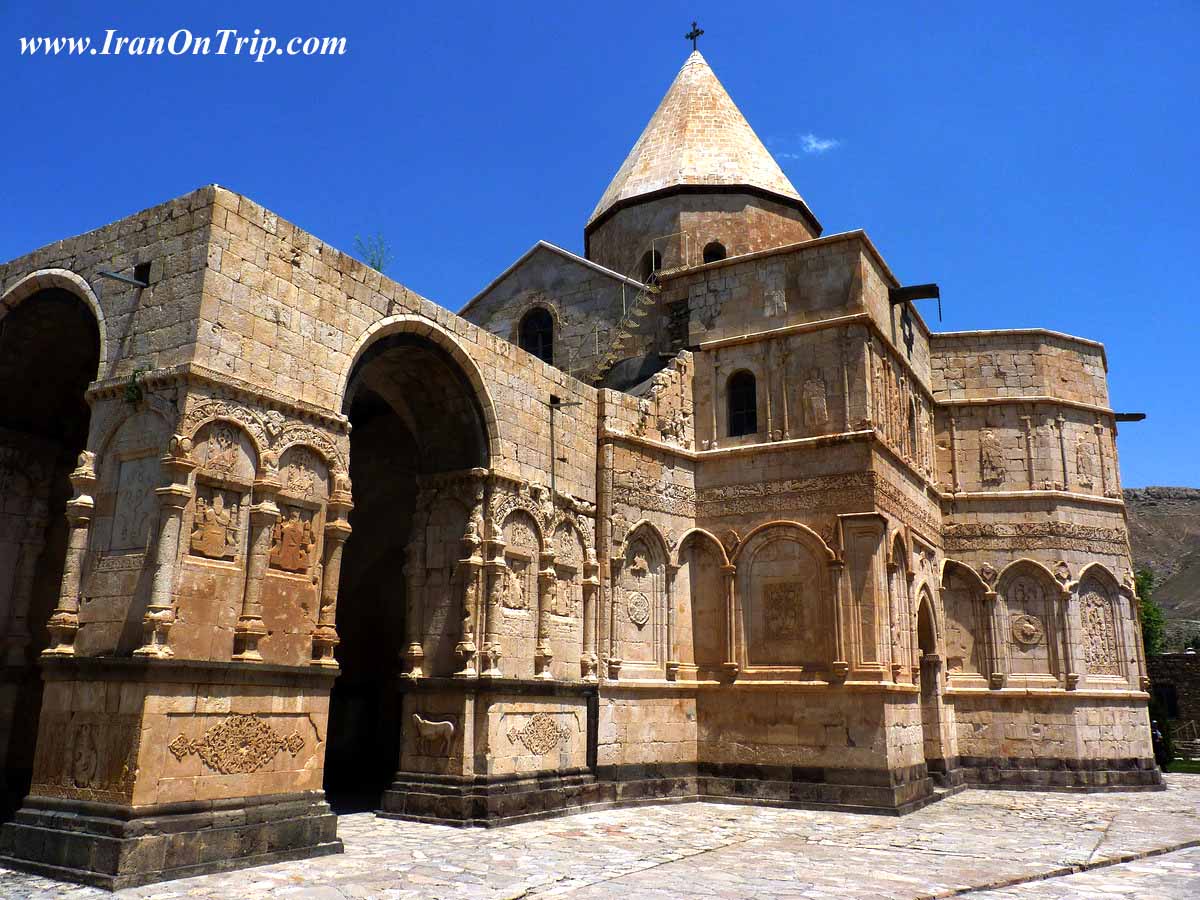 Armenian Monastic Ensembles: UNESCO Historical Site: Armenian Monastic Ensembles There are three monastic ensembles of the Armenian Christians living in the North West of present day Iran: St Thaddeus, St Stepanos, and the Chapel of Dzordzor. The oldest structure among these three dates back to the 7th century and
Armenian Monastic Ensembles: UNESCO Historical Site: Armenian Monastic Ensembles There are three monastic ensembles of the Armenian Christians living in the North West of present day Iran: St Thaddeus, St Stepanos, and the Chapel of Dzordzor. The oldest structure among these three dates back to the 7th century and
Armenian Monastic Ensembles of Iran
The Armenian Monastic Ensembles of Iran, in the north-west of the country, consists of three monastic ensembles of the Armenian Christian faith: St Thaddeus and St Stepanos and the Chapel of Dzordzor. These edifices - the oldest of which, St Thaddeus, dates back to the 7th century – are examples of outstanding universal value of the Armenian architectural and decorative traditions. They bear testimony to very important interchanges with the other regional cultures, in particular the Byzantine, Orthodox and Persian. Situated on the south-eastern fringe of the main zone of the Armenian cultural space, the monasteries constituted a major centre for the dissemination of that culture in the region. They are the last regional remains of this culture that are still in a satisfactory state of integrity and authenticity. Furthermore, as places of pilgrimage, the monastic ensembles are living witnesses of Armenian religious traditions through the centuries.
Tabriz Historic Bazaar Complex
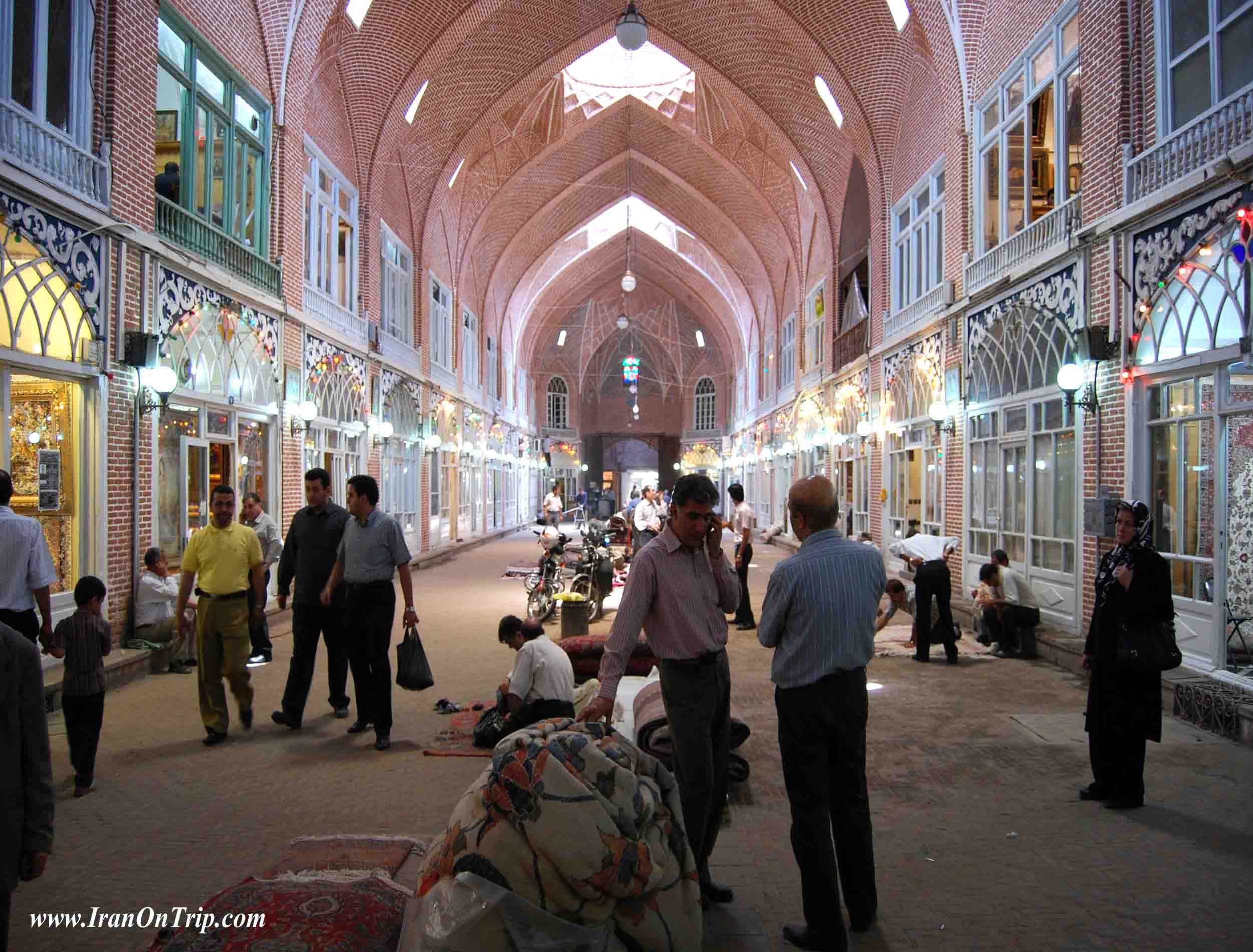 Tabriz Historic Bazaar Complex: Tabriz bazaar, East Azerbaijan ProvinceTabriz bazaar is an ancient compound of roofed brick-made passageways, structures, buildings and enclosed spaces used for a series of various functions. It has always played major roles in developing social, economical and political developments in Iran. It still plays a major role
Tabriz Historic Bazaar Complex: Tabriz bazaar, East Azerbaijan ProvinceTabriz bazaar is an ancient compound of roofed brick-made passageways, structures, buildings and enclosed spaces used for a series of various functions. It has always played major roles in developing social, economical and political developments in Iran. It still plays a major role
Tabriz Historic Bazaar Complex
Tabriz has been a place of cultural exchange since antiquity and its historic bazaar complex is one of the most important commercial centres on the Silk Road. Tabriz Historic Bazaar Complex consists of a series of interconnected, covered, brick structures, buildings, and enclosed spaces for different functions. Tabriz and its Bazaar were already prosperous and famous in the 13th century, when the town, in the province of Eastern Azerbaijan, became the capital city of the Safavid kingdom. The city lost its status as capital in the 16th century, but remained important as a commercial hub until the end of the 18th century, with the expansion of Ottoman power. It is one of the most complete examples of the traditional commercial and cultural system of Iran.
Sheikh Safi al-din Khanegah and Shrine Ensemble
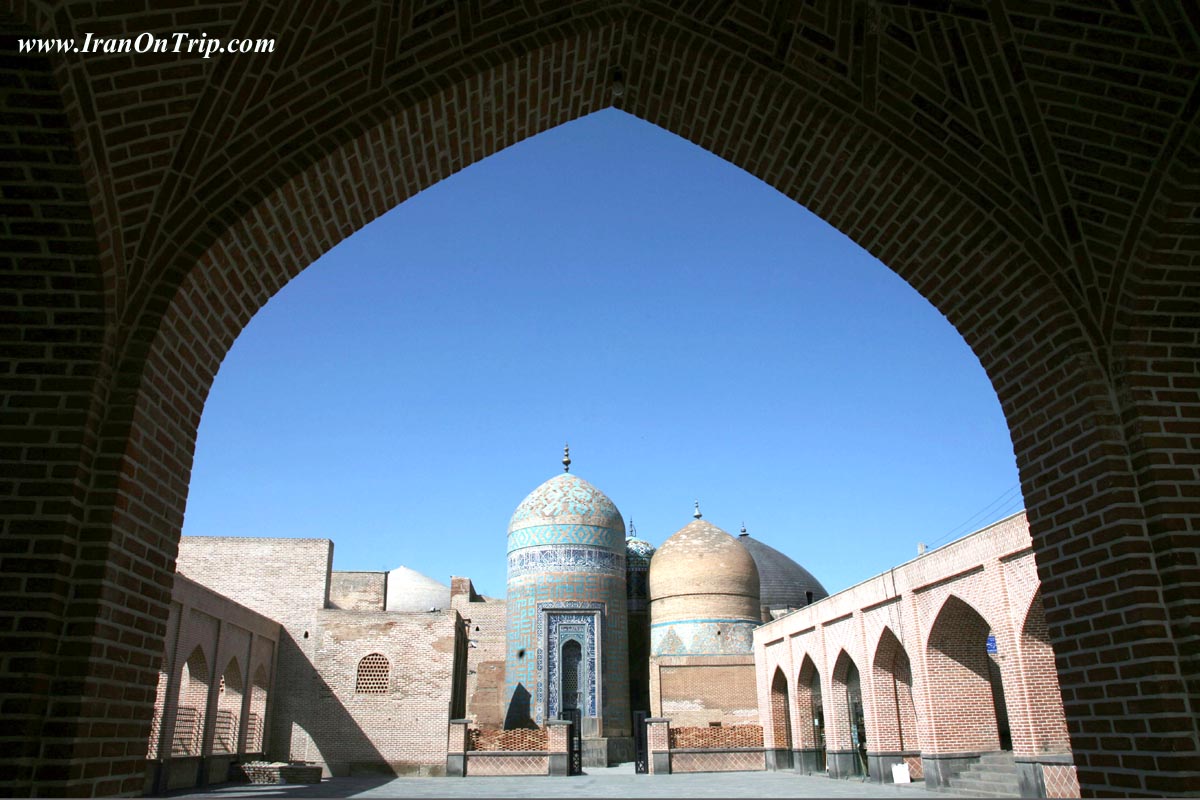 Sheikh Safi al-din Khanegah and Shrine Ensemble : Mausoleum of Sheikh Safi ArdabilBuilt between 16th and 18th century, during Safavid rulers in Iran, it consists of various buildings for different functions like khaneqah (gathering structure of sufis), a school, library, mausolea, a mosque, a cistern, a hospital, kitchens, a bakery, and some offices. It gained political and national importance when Safavid
Sheikh Safi al-din Khanegah and Shrine Ensemble : Mausoleum of Sheikh Safi ArdabilBuilt between 16th and 18th century, during Safavid rulers in Iran, it consists of various buildings for different functions like khaneqah (gathering structure of sufis), a school, library, mausolea, a mosque, a cistern, a hospital, kitchens, a bakery, and some offices. It gained political and national importance when Safavid
Sheikh Safi al-din Khānegah and Shrine Ensemble in Ardabil
Built between the beginning of the 16th century and the end of the 18th century, this place of spiritual retreat in the Sufi tradition uses Iranian traditional architectural forms to maximize use of available space to accommodate a variety of functions (including a library, a mosque, a school, mausolea, a cistern, a hospital, kitchens, a bakery, and some offices). It incorporates a route to reach the shrine of the Sheikh divided into seven segments, which mirror the seven stages of Sufi mysticism, separated by eight gates, which represent the eight attitudes of Sufism. The ensemble includes well-preserved and richly ornamented facades and interiors, with a remarkable collection of antique artefacts. It constitutes a rare ensemble of elements of medieval Islamic architecture.
The Persian Garden
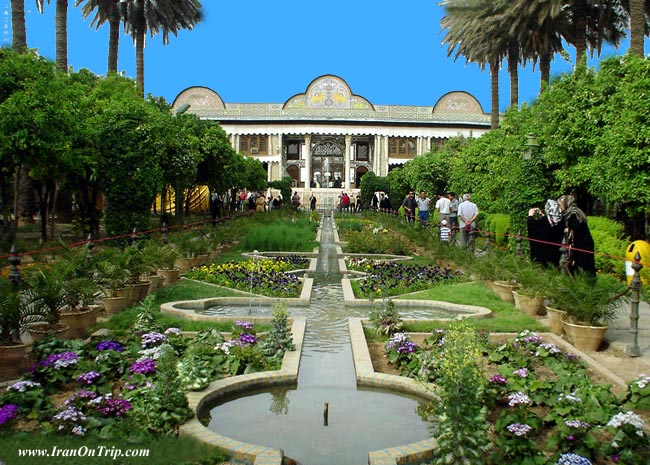 The Persian Garden: The tradition of developing and creating Persian gardens goes back to the time of Cyrus the Great, 6th century BC. The feature elements of Persian gardens include beautiful buildings, pavilions and walls, and also some sophisticated irrigation systems inherited from ancient Persians …
The Persian Garden: The tradition of developing and creating Persian gardens goes back to the time of Cyrus the Great, 6th century BC. The feature elements of Persian gardens include beautiful buildings, pavilions and walls, and also some sophisticated irrigation systems inherited from ancient Persians …
The Persian Garden
The property includes nine gardens in as many provinces. They exemplify the diversity of Persian garden designs that evolved and adapted to different climate conditions while retaining principles that have their roots in the times of Cyrus the Great, 6th century BC. Always divided into four sectors, with water playing an important role for both irrigation and ornamentation, the Persian garden was conceived to symbolize Eden and the four Zoroastrian elements of sky, earth, water and plants. These gardens, dating back to different periods since the 6th century BC, also feature buildings, pavilions and walls, as well as sophisticated irrigation systems. They have influenced the art of garden design as far as India and Spain.
.....
.....
.....

.jpg)



























